Indoor trees with low light requirements are perfect for adding a touch of nature to your home without needing a sunny spot. Species like the Dracaena, Parlor Palm, and Rubber Tree thrive in low-light conditions, making them ideal for apartments or rooms with minimal natural light. These trees not only enhance the aesthetic appeal of your living space but also improve air quality, creating a healthier indoor environment.
Caring for these low-light indoor trees typically involves regular watering and occasional fertilizing, ensuring they remain vibrant and lush with minimal effort.
We have compiled a list of 40 indoor trees that thrive in low-light conditions to make it easier for you to choose for your interior space.
Indoor Trees with Low Light Requirements List
English Ivy
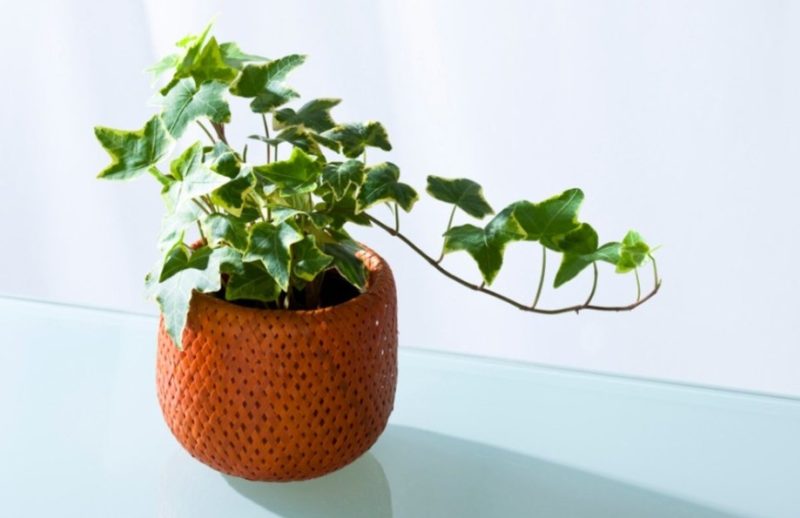
English Ivy (Hedera helix) is a versatile plant that thrives both outdoors and indoors. As a low-light houseplant, it creates a beautiful trailing effect with its small, dainty green leaves. Ideal for partial to full shade, English Ivy prefers indirect light when grown indoors. Regular misting is essential to maintain humidity, and it benefits from cool nighttime temperatures around 60°F.
While it can climb and spread extensively, indoor care can be demanding. Caution is advised when placing English Ivy, as it’s toxic to both humans and pets. Despite its challenges, it remains a popular choice for its attractive foliage.
Cast Iron Plant
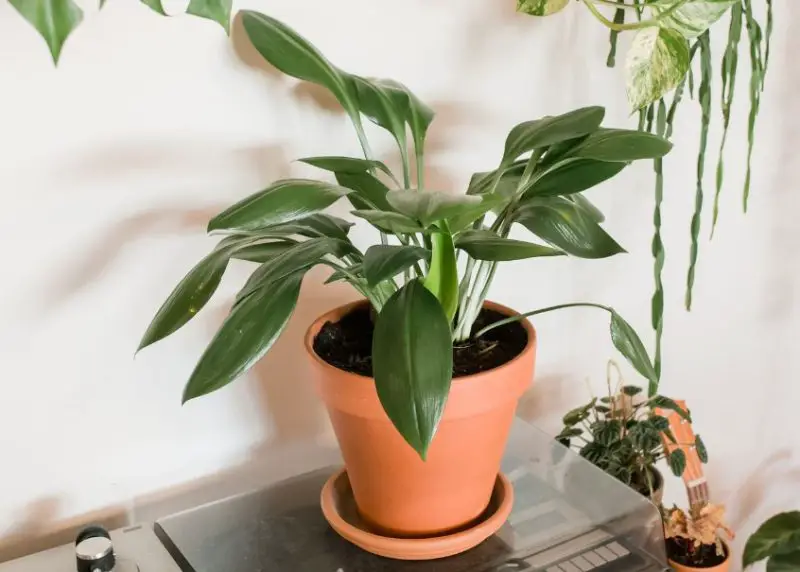
The Cast Iron Plant (Aspidistra elatior) lives up to its name with an unparalleled resilience to neglect. This low-maintenance houseplant boasts large, arching, deep green glossy leaves, adding a touch of elegance to any space. Thriving in partial to full shade, it’s ideal for north-facing windows and should be kept away from direct sunlight to prevent leaf burn.
While it’s tolerant of infrequent watering, it’s best to water when the soil feels dry. With a mature size of 2-3 feet tall and 1-2 feet wide, the Cast Iron Plant is a hardy, attractive choice for indoor greenery.
Peace Lily
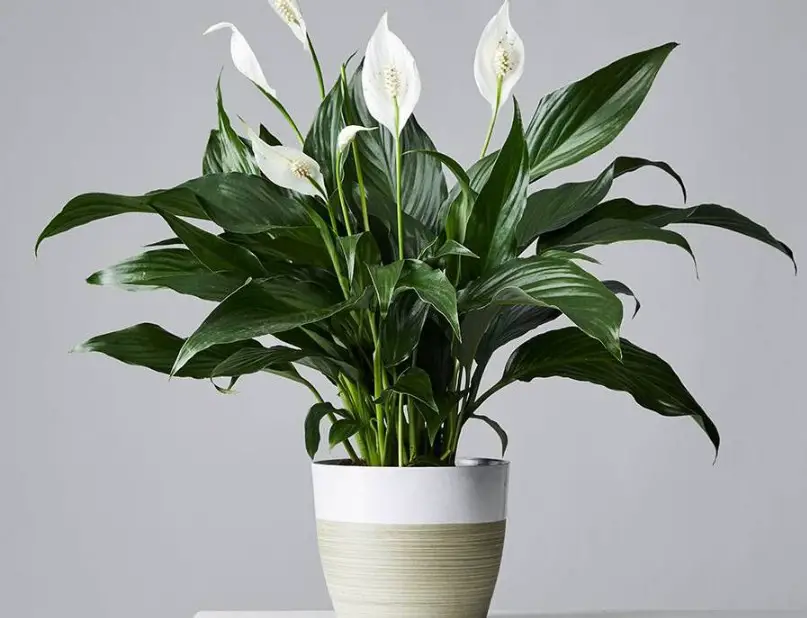
Peace Lily (Spathiphyllum) is a popular, low-maintenance houseplant that thrives in low-light conditions. Known for its large, dark green leaves and occasional elegant white blooms, it can grow 1 to 4 feet tall and wide indoors. This shade-loving plant prefers indirect light and requires ample water to prevent wilting, though it can usually recover quickly when watered.
Peace Lilies are remarkably resilient to neglect, making them ideal for novice plant owners. However, caution is advised, as they are toxic to children and pets. Despite this, their beauty and ease of care make them a favored choice for indoor greenery.
Maidenhair Fern
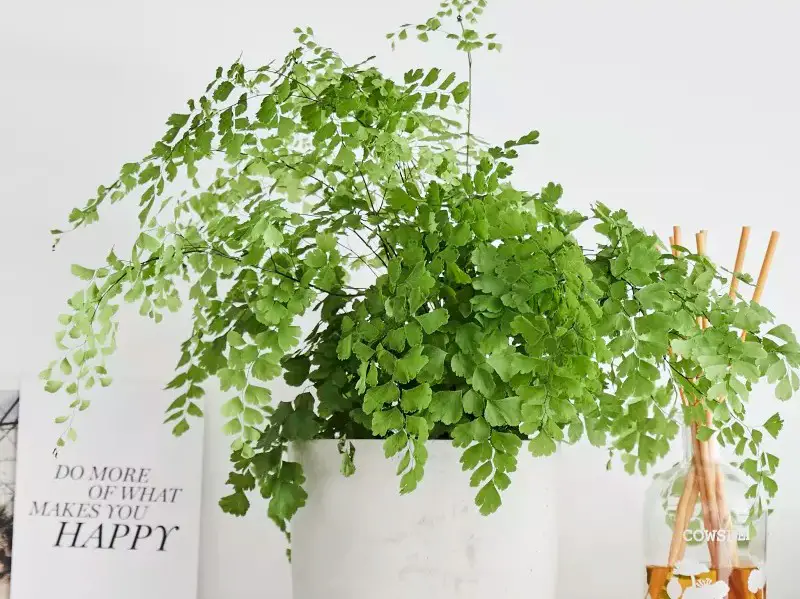
The Maidenhair Fern (Adiantum raddianum) is a delicate beauty that thrives in low-light indoor environments. Its small, fan-shaped leaves, clustered on dark stems, create an elegant green accent in any space. Growing 1 to 2 feet tall and wide, this fern prefers partial to full shade, avoiding direct sunlight.
While it’s popular, it’s considered a needy plant, requiring consistently moist (but not waterlogged) soil and a warm, humid environment to flourish. Despite its demanding nature, the Maidenhair Fern’s graceful appearance makes it a favored choice for those willing to provide attentive care.
ZZ plant
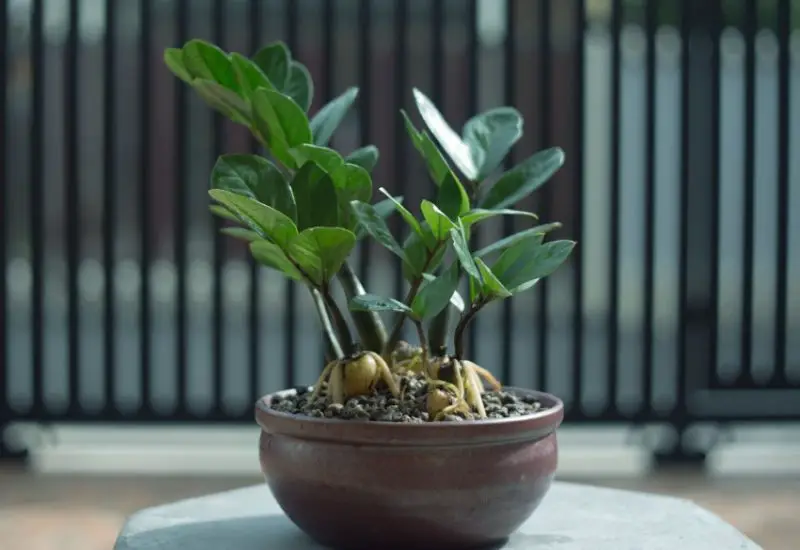
The ZZ Plant (Zamioculcas zamiifolia) is a remarkably resilient houseplant, capable of surviving even in windowless environments. Its distinctively shiny, wide, oval-shaped leaves growing upward make it easily recognizable. Thriving in partial to full shade, it performs best in bright, indirect light.
This low-maintenance plant, growing 2 to 4 feet tall and wide, is highly drought-tolerant and should be allowed to dry between waterings. While its hardiness makes it popular for offices and homes alike, caution is necessary as it’s toxic to children and pets. The ZZ Plant’s adaptability and attractive appearance make it an excellent choice for both novice and experienced plant enthusiasts.
Heartleaf Philodendron
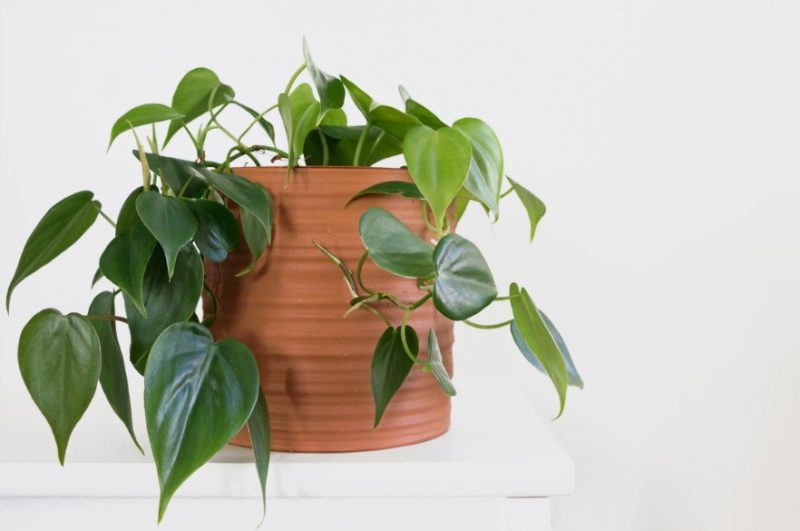
Heartleaf Philodendron (Philodendron spp.) is a popular, low-maintenance houseplant known for its long green vines and heart-shaped leaves, which create a jungle-like ambiance. Thriving in partial shade, it prefers bright, indirect sunlight but can tolerate low-light conditions, although this may result in leggy growth. Regular dusting maintains its lush appearance.
With a mature size of 10–20 feet tall and 3–6 feet spread, it’s an impressive indoor plant. While easy to care for, caution is necessary as philodendrons are toxic to children and pets. Their adaptability and attractive foliage make them a favored choice for indoor greenery.
Anthurium
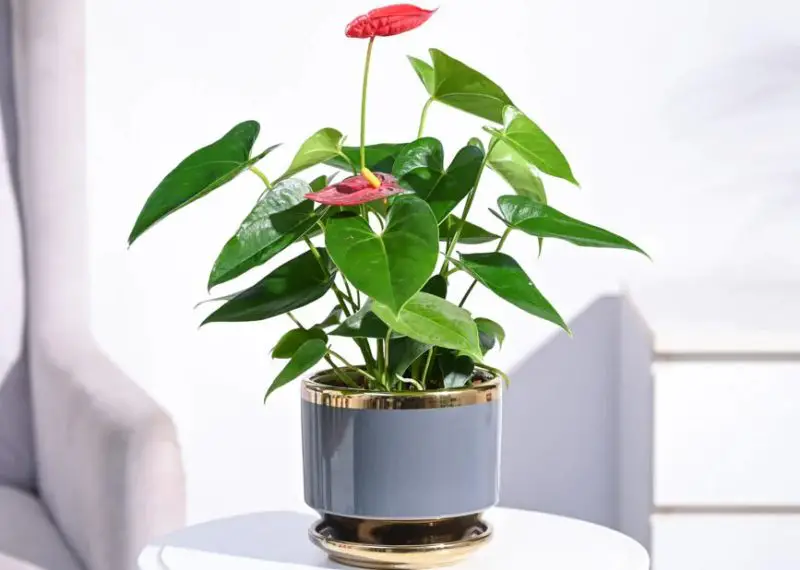
Anthurium, also known as the flamingo flower, is a striking tropical plant genus renowned for its vibrant flowers and lush foliage. Thriving in partial shade, it requires bright, indirect light to avoid leaf burn. This expert-level houseplant demands high humidity and consistently moist soil without waterlogging. Typically growing 12–18 inches tall and 9–12 inches wide, Anthurium makes an impressive indoor display.
However, its beauty comes with a caveat: it’s toxic to children and pets, necessitating careful placement. Despite its challenging care requirements, Anthurium’s exotic appearance makes it a prized choice for experienced plant enthusiasts seeking a touch of tropical elegance.
Chinese Evergreen
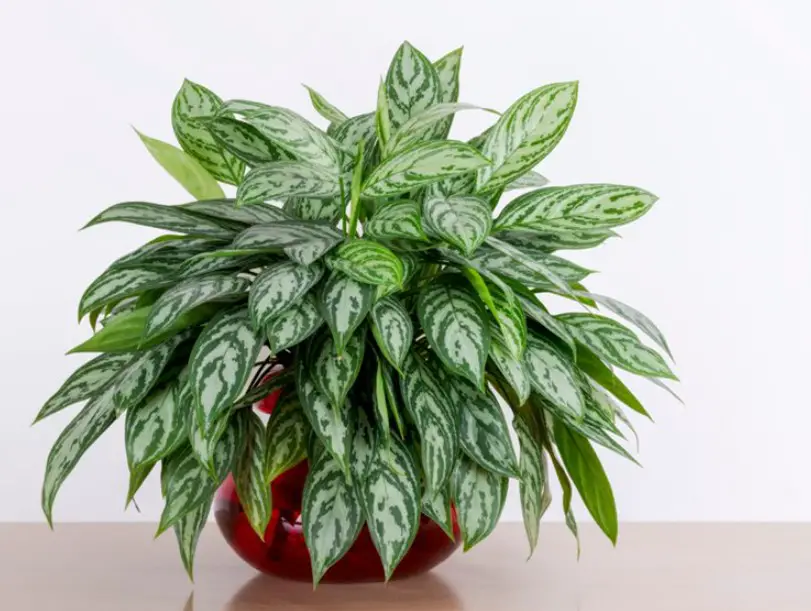
The Chinese Evergreen (Aglaonema commutatum) is a versatile, low-maintenance houseplant prized for its oval, glossy green leaves on short stems. Thriving in partial to full shade, it’s an excellent choice for low-light indoor environments. While standard varieties flourish in shady conditions, variegated types benefit from bright, indirect light to enhance their coloration.
Typically growing 1 to 3 feet tall and wide, Chinese Evergreens adapt well to various indoor spaces. However, caution is necessary as they are toxic to pets. Their ability to tolerate shade and minimal care requirements make them popular among both novice and experienced plant owners.
Swiss Cheese Plant
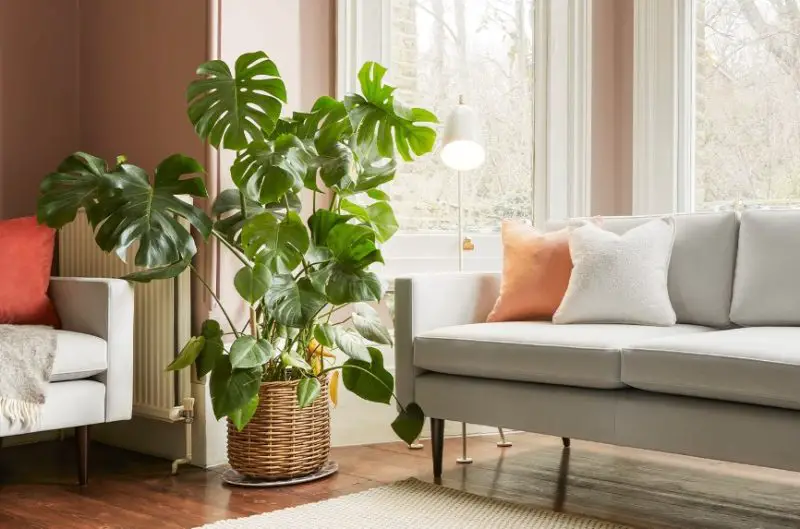
The Swiss Cheese Plant (Monstera Deliciosa), also known as split-leaf philodendron, is a striking houseplant recognized for its large, leathery green leaves with distinctive perforations. Thriving in partial shade, it adapts well to indoor environments with bright, indirect light, though excessive light can damage its foliage.
This low-maintenance plant typically grows to 3 feet tall with a 2 to 3 feet spread, making it an impressive addition to any space. While easy to care for, it’s important to note that the Swiss Cheese Plant is toxic to pets, necessitating careful placement in homes with animals.
Prayer Plant
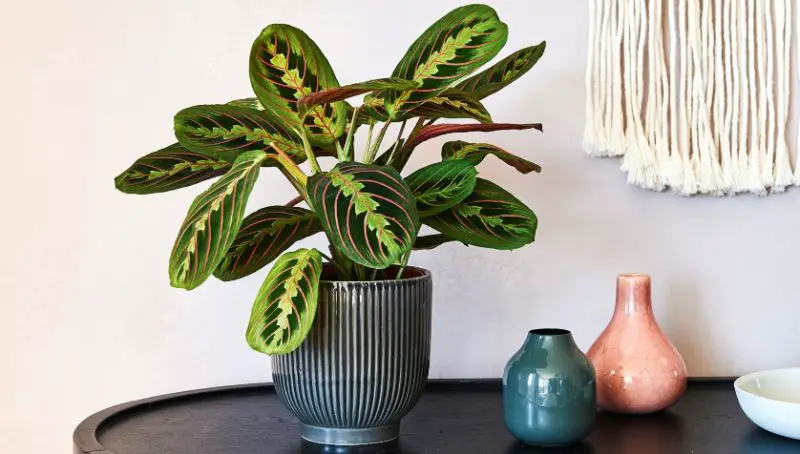
The Prayer Plant (Maranta leuconeura) is a captivating tropical houseplant known for its small stature and distinctive oval or round tricolor leaves. Thriving in partial to full shade, it adapts well to low-light conditions, making it ideal for indoor environments.
This plant, which typically grows 6 to 12 inches in both height and width, requires moderate maintenance. It flourishes in warm, humid settings and needs consistently moist soil.
While tolerant of low light, the Prayer Plant prefers bright, indirect sunlight, as direct light can damage its delicate foliage. Its unique appearance and manageable size make it a popular choice for plant enthusiasts.
Silver Pothos
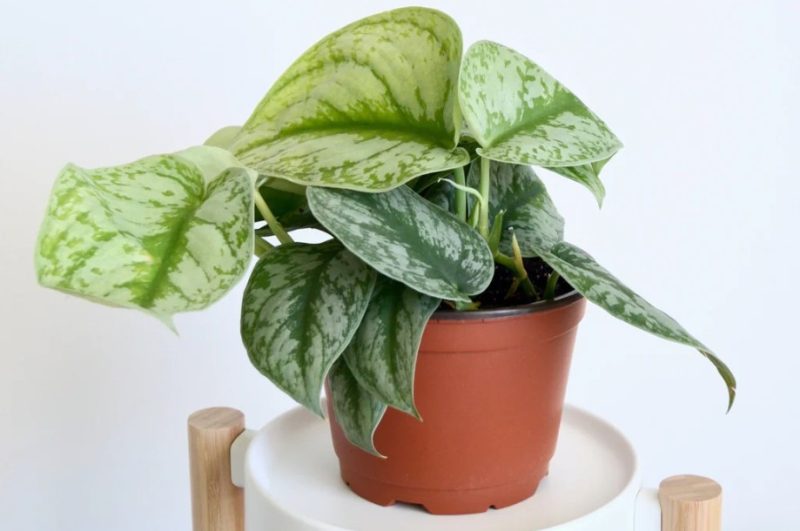
Silver Pothos (Scindapsus pictus), also known as Satin Pothos, is a versatile houseplant featuring matte green leaves speckled with silver. Thriving in partial to full shade, it adapts well to low-light indoor environments, though bright, indirect light enhances its leaf coloration.
This low-maintenance plant can grow 4 to 10 feet long, making it ideal for hanging baskets or as a trailing plant. Silver Pothos appreciates humidity, benefiting from regular misting or placement on a water-filled pebble tray. While easy to care for, it’s important to note that Silver Pothos is toxic to pets, requiring careful placement in homes with animals.
Dragon Tree

The Dragon Tree (Dracaena marginata) is a hardy, low-maintenance houseplant known for its sword-like, red-edged green leaves. Thriving in partial shade, it adapts well to indoor environments, rarely exceeding six feet in height. This resilient plant prefers bright, indirect light but can tolerate lower light conditions, though this may result in smaller leaves.
With a potential mature size of 15-20 feet tall and 3-10 feet wide in ideal conditions, it’s an impressive addition to any space. Requiring repotting only every 2-3 years, the Dragon Tree is easy to care for but toxic to pets, necessitating careful placement.
Wax Begonia
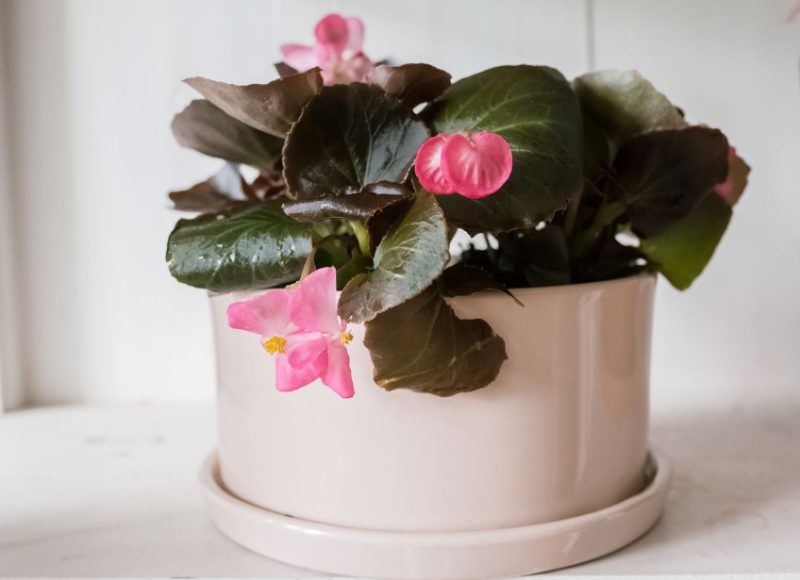
Wax Begonias (Begonia semperflorens) are charming, low-maintenance houseplants known for their glossy bronze, green, or maroon leaves and vibrant blooms. Thriving in partial shade, they prefer bright, indirect light for optimal flowering but can adapt to lower-light conditions.
These compact plants typically grow 6 to 18 inches high and 6 to 12 inches wide, making them perfect for various indoor spaces. While easy to care for, Wax Begonias are toxic to pets, so careful placement is essential. Their ability to tolerate shade and minimal care requirements make them popular among both novice and experienced plant enthusiasts.
Corn Plant

The Corn Plant (Dracaena fragrant), a member of the Dracaena genus, is a popular low-maintenance houseplant known for its thick canes and long, narrow upright leaves. Typically reaching about 6 feet tall indoors, it thrives in partial shade, making it ideal for various indoor spaces.
While bright, indirect light is optimal, this hardy plant can survive in fairly shady spots. Direct sunlight should be avoided, as it can cause leaf wilting and burning. Despite its easy care requirements, it’s important to note that the Corn Plant is toxic to pets, necessitating careful placement in homes with animals.
Polka Dot Plant
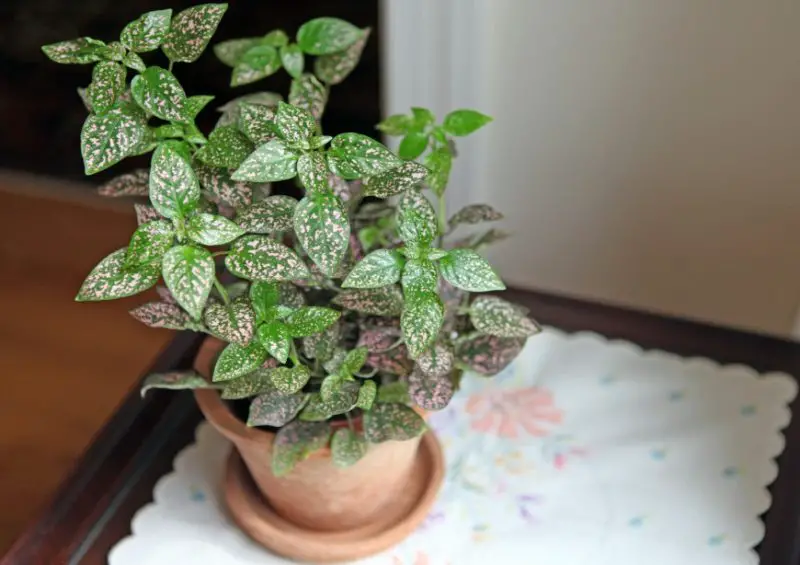
The Polka Dot Plant (Hypoestes phyllostachya) is a striking houseplant celebrated for its eye-catching foliage, typically featuring leaves with pink or white spots, though other color varieties exist. Thriving in partial shade, it’s ideal for indoor environments, particularly near east- or west-facing windows.
This low-maintenance plant grows to a modest 1 to 2 feet tall and wide, making it suitable for various spaces. While adaptable, excessive sunlight can fade its vibrant colors, so careful placement is key. The Polka Dot Plant’s unique appearance and manageable size make it a popular choice for adding a pop of color to any interior setting.
Lucky Bamboo
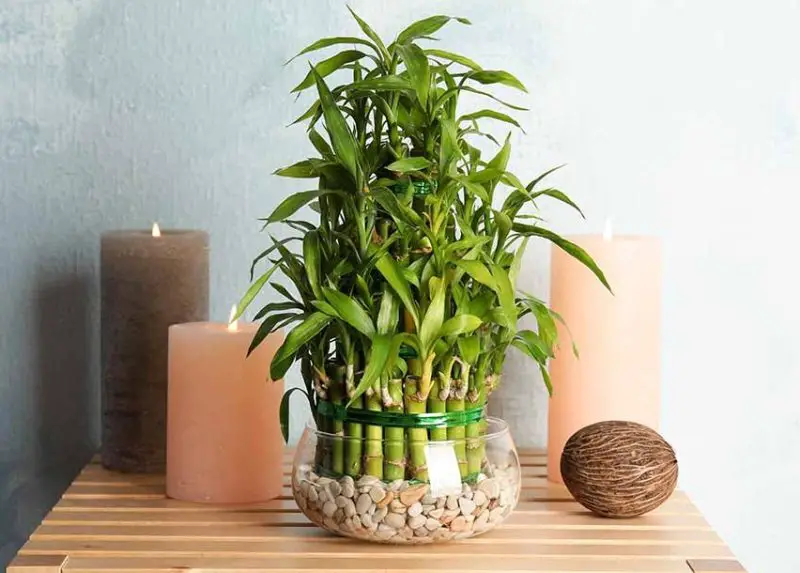
Lucky Bamboo (Dracaena sanderiana) is a versatile, low-maintenance plant suitable for homes and offices. Often featuring sculptural or braided stalks with small green leaves, it can be grown in water or soil. In feng shui, Lucky Bamboo is believed to bring good fortune, especially when received as a gift.
Thriving in partial to full shade, it’s known for its resilience. Keep it away from drafts and pets due to its toxic properties. This adaptable plant can grow 1–5 feet tall indoors.
Spider Plant
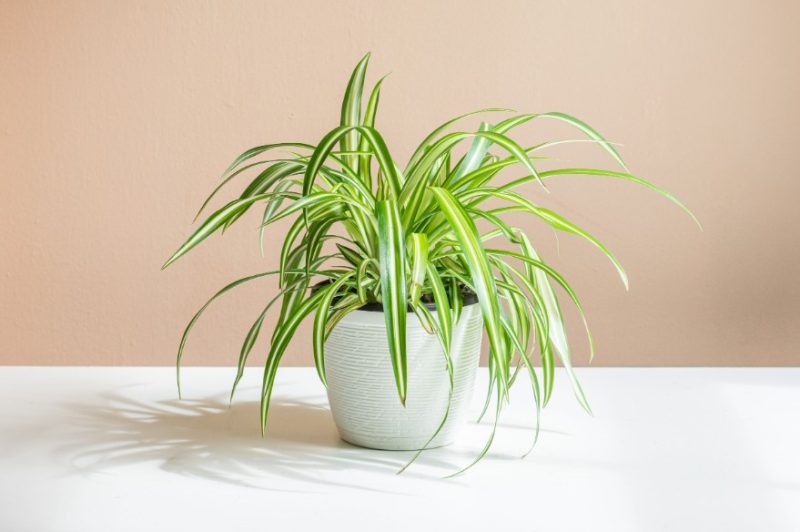
Spider Plant (Chlorophytum comosum) is a highly adaptable, low-maintenance houseplant ideal for low-light conditions. Named for its spider-like offshoots, or spiderettes, that dangle from long, slender leaves, it can be grown in hanging baskets or pots.
This resilient plant thrives in partial shade and can even survive in artificial light. Regular watering is essential to prevent the soil from drying out. With a mature size of 1-2 feet tall and wide, Spider Plants are perfect for adding greenery to various indoor spaces.
Golden Pothos

Golden Pothos (Epipremnum aureum) is a resilient, low-maintenance houseplant that thrives in various conditions, including very low light and minimal watering. Its attractive vines feature smooth, heart-shaped leaves, some with distinctive marbling. Growing 20–40 feet long and 3-6 feet wide, it’s popular for its durability and ease of care.
Regular dusting and trimming keep the vines manageable and encourage branching. Thriving in partial to full shade, Golden Pothos is ideal for indoor spaces but should be kept away from pets due to its toxicity.
Snake Plant
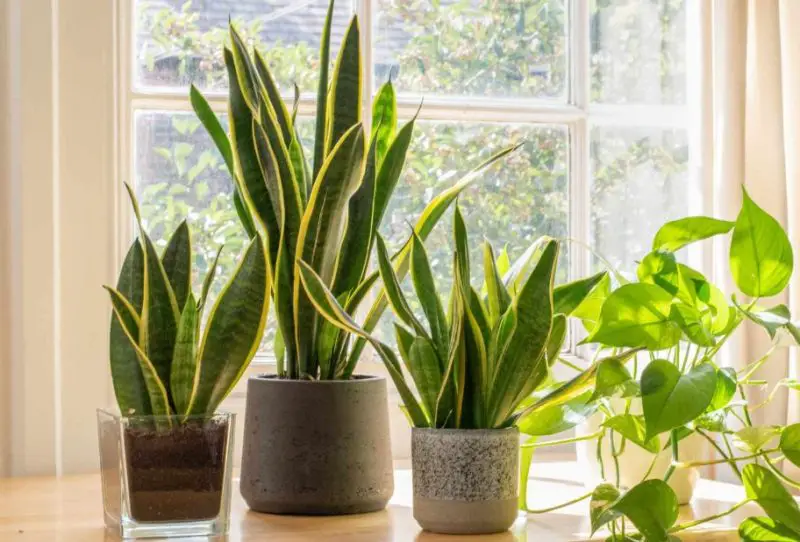
Snake Plant (Sansevieria trifasciata) is an exceptional low-maintenance indoor plant, thriving in low-light conditions. Its striking appearance features thick, sword-like green leaves that can grow up to 8 feet tall. This long-lived species can flourish for decades, preferring partial shade but tolerating shadier environments.
With mature sizes ranging from 6 inches to 12 feet, it’s adaptable to various spaces. Care should be taken not to overwater, especially in low-light areas, as this can lead to root rot. While easy to maintain, Snake Plant is toxic to pets and should be placed accordingly.
Staghorn Fern
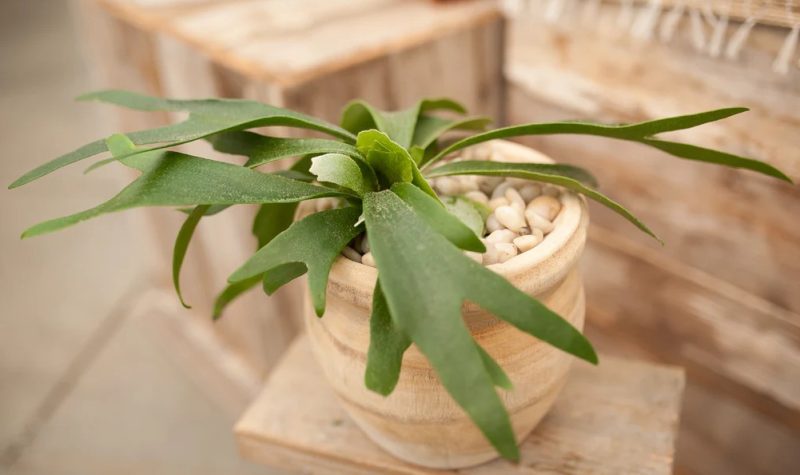
Staghorn Fern (Platycerium bifurcatum) is a unique epiphytic plant that naturally grows on other plants rather than in soil. Its distinctive green leaves, resembling deer antlers, can grow quite large, typically reaching 2 to 3 feet in both height and width.
As a houseplant, Staghorn Ferns are often mounted on wooden boards, creating stunning natural art pieces. They thrive in full shade and are susceptible to burning in direct sunlight. Proper care involves allowing the plant to dry between waterings. Despite its beauty, Staghorn Fern is considered an expert-level plant to maintain.
Guzmania
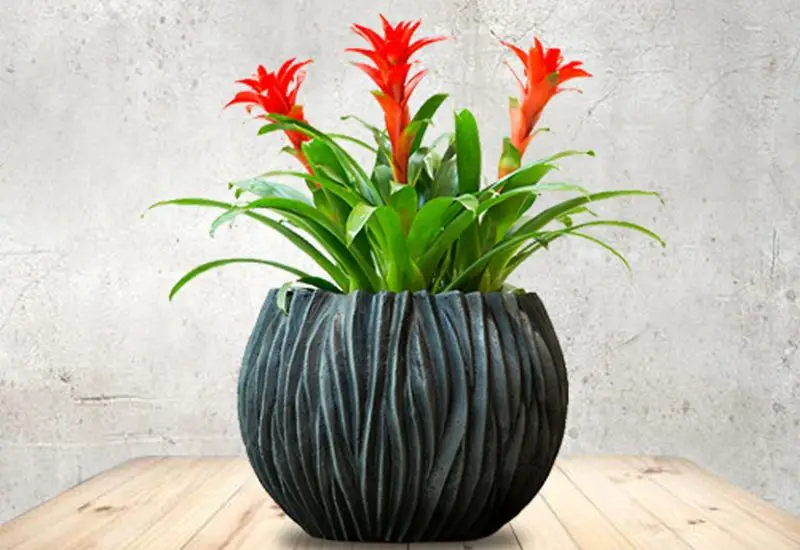
Guzmania, a striking bromeliad variety, thrives in low, indirect light despite its tropical appearance. In nature, these vibrant plants grow on trees without soil, but as houseplants, they prefer orchid-mix soil in heavy pots to balance their potentially top-heavy growth.
Reaching up to 2 feet tall and wide, Guzmanias are surprisingly low-maintenance. They require daily misting and consistently moist soil to flourish, while avoiding direct sunlight. Their unique growth habits, coupled with their colorful appearance, make Guzmanias an attractive and easy-care option for bringing a touch of tropical beauty to indoor spaces.
Parlor Palm
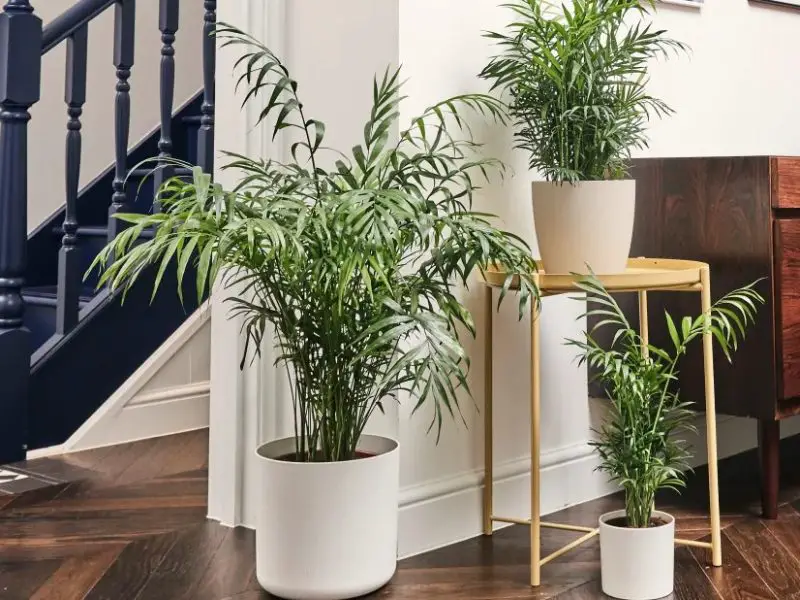
The Parlor Palm (Chamaedorea elegans) is a versatile and cheerful houseplant, adaptable to various lighting conditions. Thriving in both bright, indirect light and lower-light spaces, it’s ideal for homes with changing light throughout the day or regions with low-light seasons.
Typically grown in small clumps to create a mini-palm appearance, this low-maintenance plant prefers a well-drained, peaty soil-based mix.
With a mature size ranging from 2 to 6 feet tall, the Parlor Palm offers a tropical touch suitable for diverse indoor environments. Its adaptability and easy care make it a popular choice for both novice and experienced plant enthusiasts.
Yucca Cane
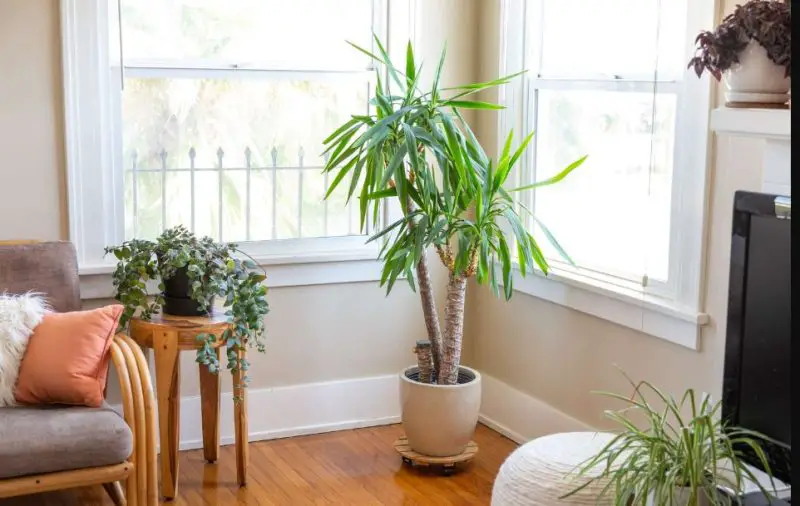
The Yucca Cane (Yucca elephantipes) is a hardy and versatile houseplant related to the aloe family. Adaptable to both bright and low-light environments, it thrives in various indoor settings, including patios and balconies, due to its tolerance for temperature fluctuations. This low-maintenance plant can grow up to 15 feet tall indoors, making it an impressive addition to any space.
Yucca Canes are drought-resistant and prefer dry conditions, requiring watering only when the soil is completely dry. Overwatering should be avoided, as it can be fatal to the plant. Their resilience and adaptability make them popular among plant enthusiasts.
Nerve Plant
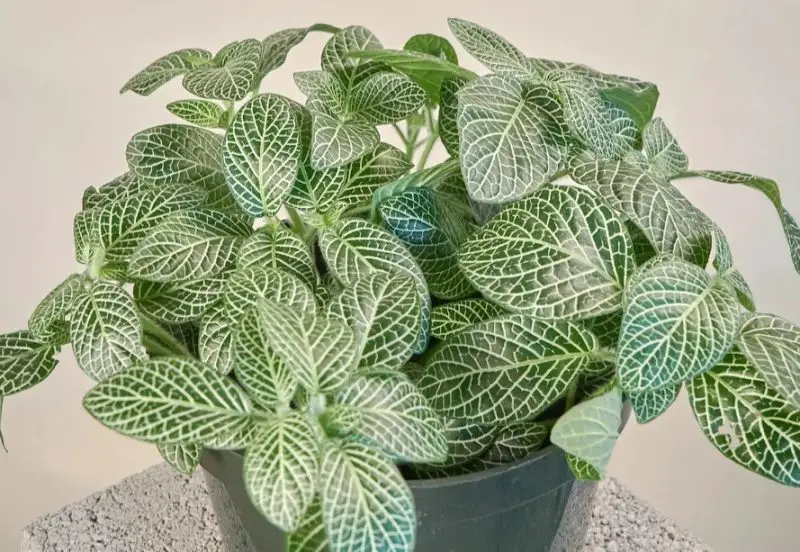
The Nerve Plant (Fittonia spp.) is a distinctive evergreen perennial, prized for its slow-growing nature and colorfully veined leaves. Versatile in its growth habits, it can be used as a creeping groundcover or in hanging planters, potentially trailing up to 18 inches.
This needy plant thrives in partial to low-light conditions, requiring a humid and consistently moist environment. With a mature size of 3-6 inches tall and up to 18 inches spread, the Nerve Plant is particularly sensitive to direct sunlight, which can quickly cause leaf burn.
Wax Plant
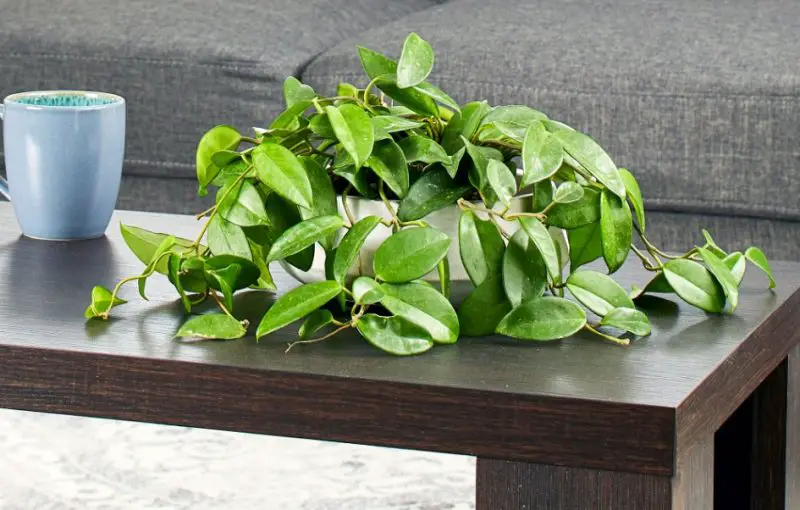
The Wax Plant (Hoya carnosa) is a versatile and resilient houseplant known for its thick, leathery leaves and intricate star-shaped blooms when healthy. Adaptable to various light conditions, it thrives in bright, indirect light but can tolerate low-light environments.
While direct sunlight can scorch its leaves, this low-maintenance plant is forgiving and capable of bouncing back from periods without water. It typically grows to 12 inches tall.
Dieffenbachia Plant
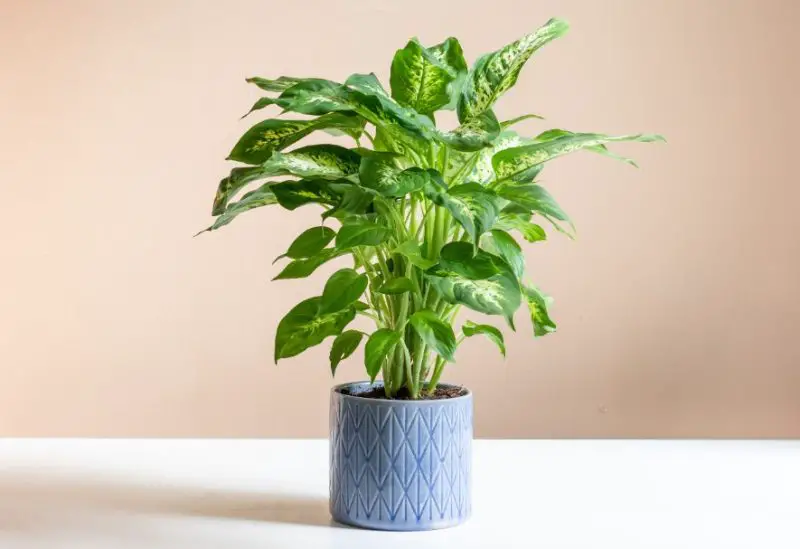
Dieffenbachia, a genus encompassing various popular houseplant varieties, is known for its fast growth and lush appearance when well-maintained. These plants thrive in filtered, indirect light conditions, such as sunlight diffused through curtains, rather than bright, direct, or entirely low-light environments. High humidity further enhances their growth.
Typically reaching 3-5 feet tall indoors, Dieffenbachias are generally low-maintenance, making them attractive to many plant enthusiasts. However, it’s crucial to note their high toxicity to humans, cats, and dogs, necessitating careful placement in homes.
Spiderwort

The spiderwort, also known as the purple heart, is a stunning flower native to North, South, and Central America. This easy-to-care-for plant, scientifically named Tradescantia zebrina, thrives in full sun, partial sun, or shade.
It reaches a mature size of 1–3 feet tall and 1–1.5 feet wide. While not demanding for light, it needs a few hours of sunlight daily. Ensure to water it every few days, as it thrives best in moist conditions.
Bird’s Nest Fern
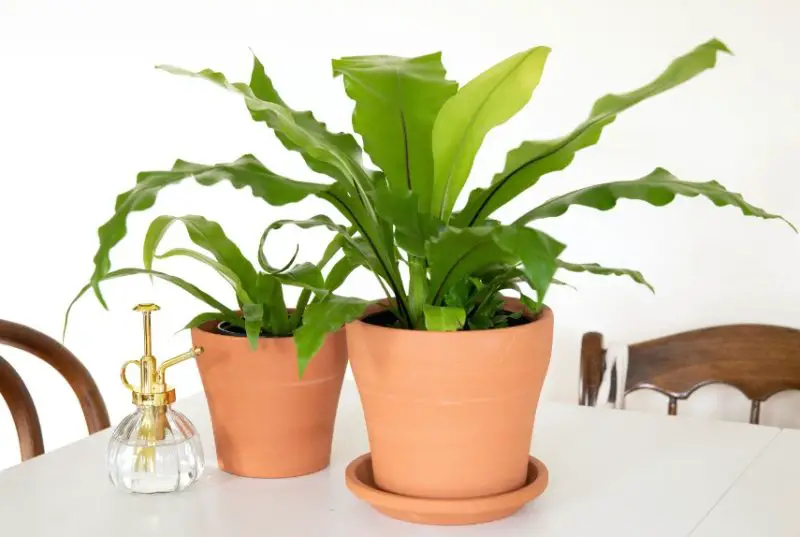
The bird’s nest fern, or Asplenium nidus, is an epiphytic plant native to rainforest environments, meaning it grows on the surface of other plants. This fern thrives in high humidity and features smooth, lance-shaped fronds that develop beautiful ripples with proper sun exposure.
Ideal for indoor settings, it requires partial sun and shade, reaching a mature size of 2 feet tall and wide. With low maintenance needs, the bird’s nest fern is perfect for adding a touch of greenery to any humid space.
Radiator Plant
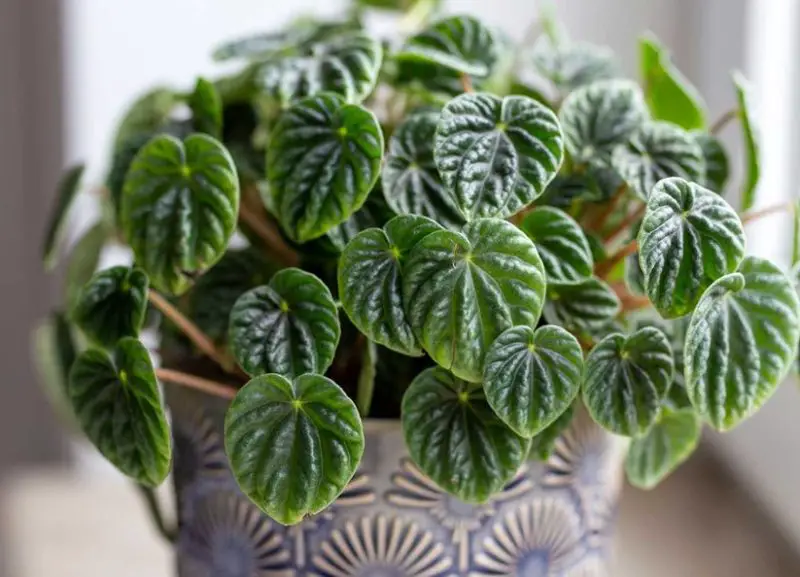
Radiator Plants, or Peperomia, are popular, easygoing houseplants ideal for filling small spaces. These hardy plants thrive in warm, humid environments and adapt well to various light conditions, though they prefer moderate indirect light.
With a mature height of up to 10 inches, Peperomias are perfect for compact areas. Their low-maintenance nature makes them suitable for both novice and experienced plant enthusiasts.
One of their most appealing features is the wide variety of available species, offering diverse leaf shapes and colors. This versatility allows plant lovers to expand their collections with different Peperomia varieties, each bringing its own unique charm to indoor spaces.
Arrowhead Vine
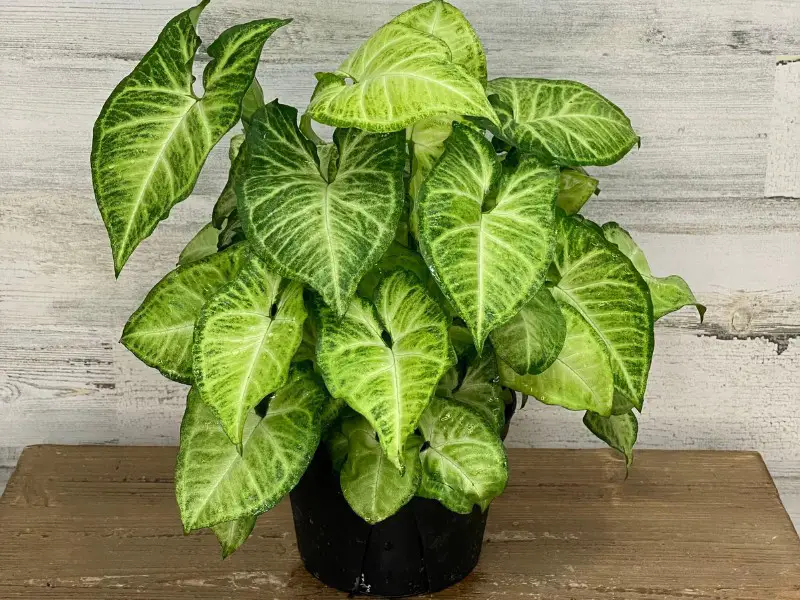
The Arrowhead Vine (Syngonium podophyllum) is an attractive, low-maintenance houseplant ideal for both novices and experts. Known for its distinctive arrowhead-shaped mature leaves, it’s particularly suited as a hanging or trailing plant.
This easygoing vine thrives when left largely undisturbed and adapts well to various light conditions, though it prefers bright, indirect light to shade. Direct sunlight can easily damage its foliage, making it perfect for lower-light environments. Deeper green varieties are especially shade-tolerant.
With a mature size of 3-6 feet tall, the Arrowhead Vine offers a lush, cascading appearance that can enhance any indoor space without demanding extensive care.
Bird of Paradise
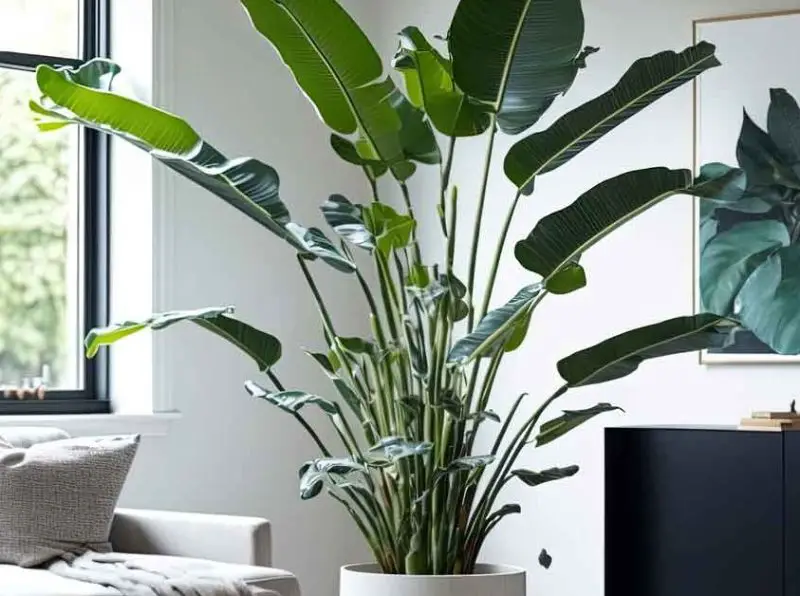
The bird of paradise, related to the banana plant, is a popular tropical flower. To care for it, keep the soil well-watered and ensure it gets plenty of light. For low-light homes, consider using growing lights.
These plants, known scientifically as Strelitzia reginae and Strelitzia nicolai, require full to partial sun. They can reach a mature size of 3.5–6 feet tall and 3–4 feet wide, with a medium level of care difficulty.
Ponytail Palm
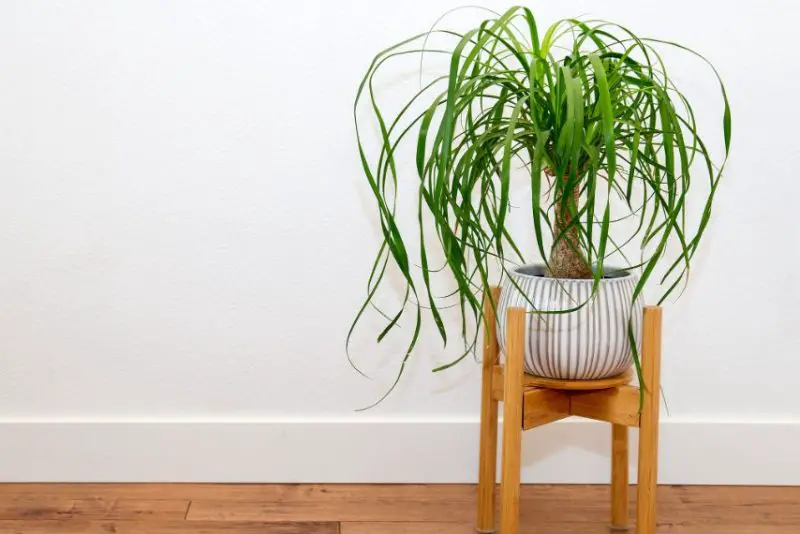
The ponytail palm, or Beaucarnea recurvata, is an easy-to-care-for indoor plant that thrives in low-light homes. This slow-growing plant requires patience to reach maturity, eventually reaching 6–8 feet tall with a spread of 3–5 feet.
It does best in full sun or bright, indirect light. Ensure that you water it regularly to maintain its health. With its low-maintenance nature, the ponytail palm is perfect for indoor gardening enthusiasts.
Money Tree
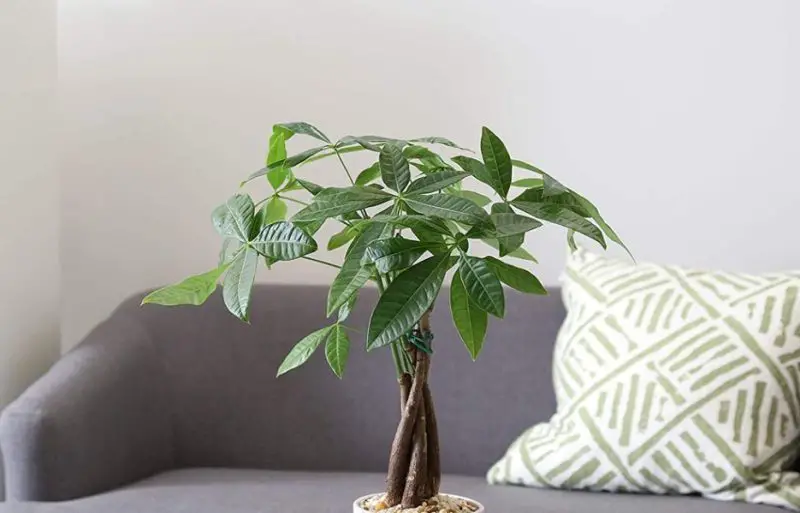
The money tree, or Pachira aquatica, is a popular and easy-to-care-for houseplant. Known for its hardy nature, it’s often used in feng shui to promote good energy in the home. This versatile plant thrives in full to partial light and can reach a mature size of 6–8 feet tall and wide.
Its low maintenance requirements make it an excellent choice for both novice and experienced indoor gardeners.
Dwarf Umbrella Tree

The dwarf umbrella tree, or Schefflera arboricola, is a tropical houseplant with vibrant, oval-shaped green leaves. Ideal for low-light rooms, this plant adds a touch of greenery indoors. Though it can sprout flowers, this is rare when it is grown inside.
It thrives in bright, indirect light and can reach a mature size of 4-6 feet tall and 3-6 feet wide. With a medium difficulty level, it’s suitable for those with some plant care experience.
Calathea
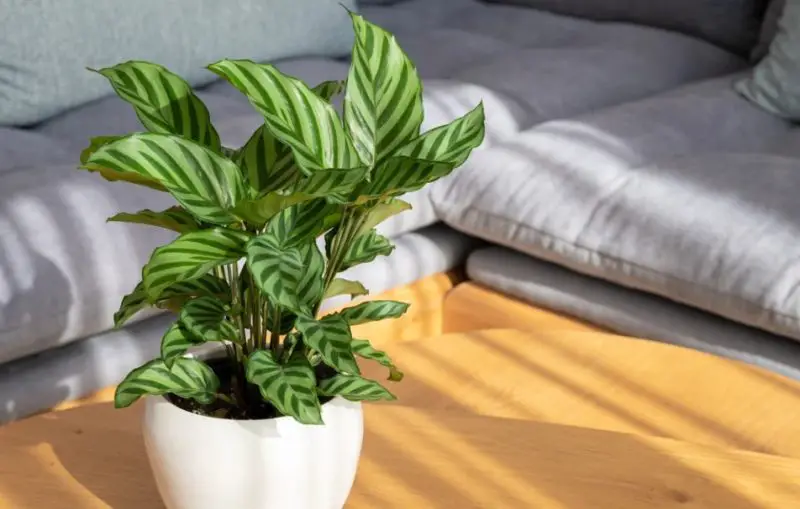
The calathea, an indoor jungle plant, thrives in low-light settings and is admired for its bold, oblong leaves adorned with stunning colors and veining. Also known as the zebra plant, peacock plant, or rattlesnake plant, it adds a vibrant touch to any room.
These houseplants can be finicky, making them challenging for beginners. Calatheas require partial sun or shade and can grow to 1-2 feet tall and wide, with a difficulty level rated as hard.






